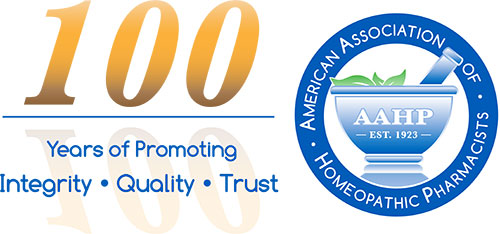Success: Implementing HPUS Guidelines for FDA Compliance, Part 2
By Mark Land, AAHP President
Co-hosted by AAHP and HPCUS on June 15, the Summit: Implementing HPUS Guidelines for FDA Compliance, Part 2 was an overwhelming success from multiple perspectives. This was the second installment of a compliance program being developed by the Homeopathic Pharmacopoeia Convention of the United States (HPCUS) and presented by AAHP. This program aims to develop guidance for manufacturers and FDA related to the challenges of working with micro-dilutions of active ingredients.
HPCUS proposes to include five new guidelines in the areas of starting materials receipt and inspection, dilution process validations in liquid and solid phases, uniformity of dosage units and finished product testing. During this year’s Summit we examined nearly completed work on starting material receipt and inspection and a concept paper on process validation study design for liquid Hahnemannian dilutions.
HPCUS president Dr. William Shevin offered remarks on the history of the Homeopathic Pharmacopoeia of the United States and why it is important to participate in the activities of the HPCUS. Dr. Nelly Bibak introduced our presenters and updated the industry on the progress across the five topic areas.
Isabelle Chanel, an analytical chemist with Boiron, presented a concept paper on process validation approaches when manufacturing Hahnemannian liquid dilutions. Her presentation covered validation project design, surrogate markers, and risk analysis for substances with known toxicity.
Dr. Adam Grobin presented conclusions and guidelines for manufacturers when receiving homeopathic active ingredients. Specifically important was how to manage active ingredients that are received in concentrations below the limit of detection.
Finally, Dr. Richard Lostrito of FDA’s Office for Pharmaceutical Quality gave a presentation that discussed quality as one of the facets along spectrum risks that FDA considers within the context of their revised draft guidance Drug Products Labeled as Homeopathic. Dr. Lostritto also discussed two potential confounders to the homeopathic liquid dilution manufacturing process.
Now why did I say it was successful? At AAHP we look at a several parameters when evaluating an education event: attendance, quality of the Information presented, and other objectives established for the event.
We had 55 registered attendees but we know (and encouraged) multiple staff per company gather for group viewings of the Summit. Our goal for this specialized and technical event was 50 registered attendees.
The quality of the information was the result of the best of today’s homeopathic community. An industrywide collaboration provided practical aspects to the think tank concepts produced by experts at HPCUS in the fields of medicine, biology, botany, chemistry, and pharmacy who also have an expertise in homeopathy. Also Dr. Lostritto’s presentation brought several new ideas and concepts for HPCUS to consider.
Finally, we continued and enriched the dialog with FDA on topics unique to the homeopathic industry.
That’s what I call a success.
A more detailed analysis of the content can be found in this article by Eric Foxman, AAHP Secretary and HPCUS Senior Scientist.
